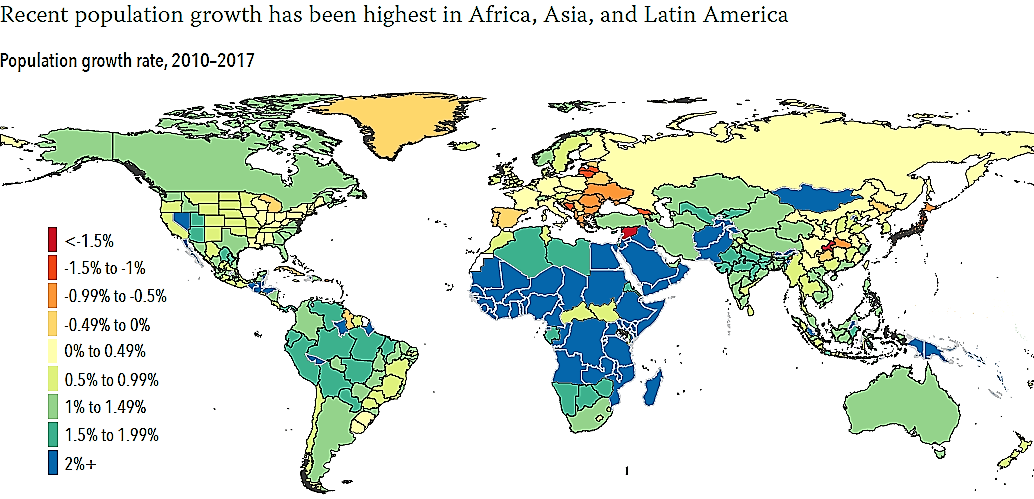New GBD estimates on population and fertility
As part of the annual Global Burden of Disease (GBD) Study, the Institute for Health Metrics and Evaluation at the University of Washington has released new estimates on population and fertility. This study, published 8 November in The Lancet presents the first estimates of population by location from 1950 to 2017 based on transparent data and analytical code, applying a standardized approach to the estimation of population for each year of age for each calendar year from 1950 to 2017 that can be replicated by other researchers.
Findings include that despite reductions in the total fertility rate (TFR), the global population has been increasing by an average of 83.8 million people per year since 1985, with much of this increase in South Asia and sub-Saharan Africa.
Specifically, the global population increased by 197.2% since 1950, from 2.6 billion to 7.6 billion people in 2017. The global annual rate of population growth increased between 1950 and 1964, when it peaked at 2.0%; this rate then remained nearly constant until 1970 and then decreased to 1.1% in 2017. Population growth rates in the Southeast Asia, East Asia, and Oceania GBD super-region decreased from 2.5% in 1963 to 0.7% in 2017, whereas in sub-Saharan Africa, population growth rates were almost at the highest reported levels ever in 2017, when they were at 2.7%. The global average age of the population increased from 26.6 years in 1950 to 32.1 years in 2017, and the proportion of the population that is of working age (age 15–64 years) increased from 59.9% to 65.3%. At the national level, the TFR decreased in all countries and territories between 1950 and 2017; in 2017, TFRs ranged from a low of 1.0 livebirths in Cyprus to a high of 7.1 livebirths in Niger (see map attached).
For more information on this and other studies that comprise the 2017 GBD, visit the GBD 2017 Resources page.
The new GBD population and fertility estimates improve upon previously available estimates in three key ways:
|
|

